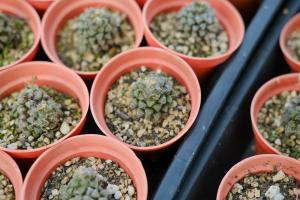Introduction
Water is a precious natural resource that is essential for the survival of all living organisms. However, due to increasing population and global warming, water scarcity has become a major concern worldwide. Water recycling plants are one of the solutions to this problem. In this article, we will explore how a water recycling plant works and its importance.
What is a water recycling plant?
A water recycling plant is a facility that processes wastewater or greywater and converts it into clean, reusable water. The plant can be either municipal or industrial, depending on the source of water.
The water recycling process
The water recycling process involves several stages that allow the removal of impurities and contaminants from the wastewater. The following are the major stages:
Screening and grit removal
The first stage of the water recycling process involves screening and grit removal. The wastewater is first passed through a grid, which removes large solids such as leaves, sticks, and other debris. Grit removal is then carried out to remove small particles such as sand and soil, which can interfere with the subsequent treatment stages.
Sedimentation
After screening, the water is sent to a sedimentation tank, where it is allowed to settle. This stage involves the removal of fine particles that cannot be removed during screening and grit removal. The process is carried out by allowing the water to stand still for about two hours, which allows the heavier particles to settle at the bottom. The clear water on the surface is then taken to the next stage.
Filtration
The water is then passed through a series of filters, which removes organic materials, suspended solids, and other contaminants. The filtration process can be either physical or biological. Physical filtration involves the use of sand or charcoal filters to remove impurities, while biological filtration uses a biological process to breakdown impurities.
Disinfection and treatment
The final stage of the water recycling process involves disinfection and treatment to ensure that the water is safe for use. The water is treated with chemicals such as chlorine, ozone, or ultraviolet light, which kills bacteria and other pathogens that may be present in the water. The water is then stored in a reservoir before being sent to the distribution system for reuse.
Conclusion
Water recycling plants play a vital role in ensuring that we have a sustainable supply of clean water. By recycling wastewater and greywater, we can reduce water scarcity, conserve water resources, and prevent pollution of our environment. Recycling water also reduces our dependence on freshwater sources, which are becoming increasingly scarce. With advanced technology and efficient water policies, water recycling plants are now more effective and affordable than ever.

 how many times do yo...
how many times do yo... how many planted tre...
how many planted tre... how many pine trees ...
how many pine trees ... how many pecan trees...
how many pecan trees... how many plants comp...
how many plants comp... how many plants can ...
how many plants can ... how many plants and ...
how many plants and ... how many pepper plan...
how many pepper plan...






























